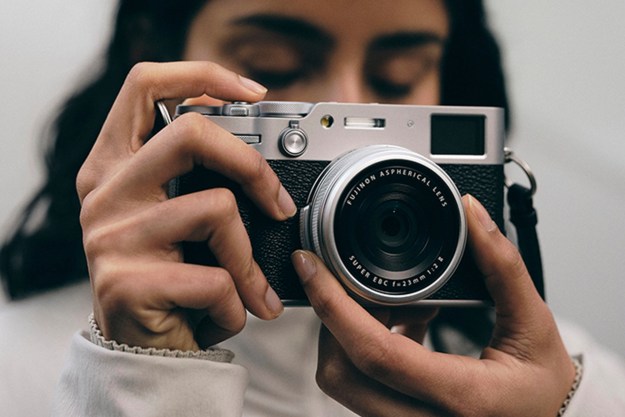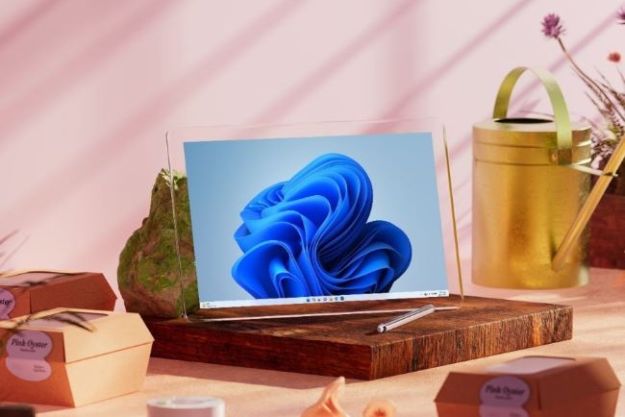“I had high expectations for the Exilim EX-Z77, but was let down in too many ways to justify a recommendation.”
- Slim and sexy design; large LCD; excellent battery life
- Poor quality stills; poor performance in low light situations
Summary
Casio truly made a name for itself with the Exilim series of cameras it introduced at the beginning of the century. Exilim cameras have always been super compact, sleek, and sexy, making them ideal for people who like to travel light and easy. Hip to the fact that YouTube and other video sites are all the rage, Casio has released a new Exilim camera — the EX-Z77 — with a veritable cornucopia of features, ‘YouTube capture mode’ being the most notable and promoted spec. The EX-Z77 certainly sounds like a great camera, and the $199 USD MSRP is hard to beat. Read on to find out if it performs as well as expected.
Features and Design
The Casio Exilim EX-Z77 is a super compact 7.2-megapixel camera with a huge LCD screen and a long list of features that even a novice photographer can master. The body of the Exilim EX-Z77 is only slightly larger than a Motorola RAZR or RIZR phone, measuring a mere 3.74” (W) x 2.32” (H) x 0.78” (D) and weighing roughly 4 ounces. The EX-Z77 fits comfortably in the palm of one’s hand (assuming one has an average-sized hand) and it slips into a shirt pocket without a noticeable bulge. The housing of the EX-Z77 is made of brushed, coated, and painted aluminum.
The LCD screen is 2.6 inches, has a 14:9 ratio (almost 16:9), and displays 479 x 240 pixels. The screen is more than three-quarters of the size of the entire camera, which makes it look even larger than it already is. Casio uses a smart combination of icons, images, and text to make for instantly understandable controls. Even if you’ve never used a Casio camera before, the menus are quite easy to follow. The LCD screen itself is coated in a relatively scratch-resistant plastic. It’ll stand up to most common abuse, but it may fall victim to the sharp edges of keys if placed in a pocket, purse, or briefcase.
Opposite the LCD screen is the zoom lens. Encircled by a bright, silvery aluminum disc, the zoom lens pops out about 1″ from the body of the camera when turned on. Zooming in and out does not extend or retract the lens itself. The lens has a 3x optical zoom and f/3.1-6.3. It’s an 18.9mm lens, so you’ll be able to get some decent wide-angle shots. When the optical zoom is used at 3x, the lens functions as if it was 56.7mm.
The 7.2-megapixel sensor is certainly not cutting-edge in the latter part of 2007. Most cameras are being released with 10 megapixel sensors. That said, the numeric value of megapixels has less bearing on overall quality than the sensor itself. The EX-Z77 uses a 1/2.5-inch square pixel color CCD, which is good, but not great.
Stills are captured in JPEG/JPG mode, video is captured in QuickTime H.264, and audio is captured in WAV format. Still and video quality/sizes can be customized, but audio recording seems to be limited to a single (albeit perfectly sufficient) mono setting. Because Casio endowed the EX-Z77 with so many custom settings, it’s wasteful to list all the possibilities in this review. Let’s just say that there are more settings than on most point-and-shoot digital cameras.
One of the coolest features of the EX-Z77 is its ability to shoot stills and video in standard format or the ultra-sleek 16:9 format. If you want to take videos for playback on a widescreen laptop or TV, the “wide” modes are best. Video resolutions are: 848 × 480 (UHQ Wide/HQ Wide), 640 × 480 (UHQ/HQ/Normal), and 320 × 240 (LP).
The physical buttons and controls on the EX-Z77 are kept to a simple minimum. On the top of the camera are two buttons: on/off and capture (for video, stills, and audio). On the bottom of the camera, you’ll find the universal tripod mount, USB/AV jack, and the battery/memory card slot. On the back of the camera, just to the right of the LCD screen, you’ll find the wide and telephoto buttons (zoom out and in, respectively), two buttons to select playback versus record modes, an iPod-like five-way controller for navigating menus and changing settings, a menu button, and the very poorly named BS button. The BS button is not what you push when people are giving you “BS” about taking their photo — it’s the button you push to select any of the 42 pre-set “Best Shot” modes for video and stills.
Sadly, Casio felt it necessary to equip the Exilim EX-Z77 with a proprietary mini-USB jack, forcing users to keep yet another USB cable at hand. With so many other camera manufacturers using standard mini-USB ports, it’s a wonder Casio doesn’t make it easier on consumers by hopping on the universal mini-USB bandwagon.
What you get in the box: Exilim EX-Z77 camera, battery charger (BC-11L) and AC power cord, proprietary USB cable, AV cable, wrist strap, CD with software, Lithium ion battery (NP-20), and a healthy dose of instructions and user guides.
The Casio EX-Z77
Setup and Use
Setting up the Exilim EX-Z77 is very easy and takes less than a few minutes. After opening the product packaging, the first thing you’ll want to do is charge the battery. Place the Casio battery in the wall charging unit and plug it in. The battery should charge up to 80 percent or more in just a couple hours.
While the battery is charging, open the memory card/battery bay on the bottom of the camera and insert an SD card. If you plan to use the stalwart for anything other than low-res photos, we recommend getting a memory card no smaller than 1GB. If you want a 2GB card, they can be found online for about $20 USD.
One of the more important features of a digital camera — for people who are serious about taking good photos — is the LCD screen. Aside from the eye of the photographer, the LCD screen offers the very first opportunity for quality control. If you see that a photo is under- or overexposed, you’ve missed part of the scene, or the image is out of focus, then you know to take the shot over again. When an LCD screen is of insufficient quality, it’s very hard to tell whether your photo is bad or if it’s just the camera’s display. Unfortunately, the LCD screen on the EX-Z77 falls short of expectations, making it tough to maintain solid control over image quality.
Real Life Tests
When selecting a digital camera, impressive specs are certainly something you want to look for, but even more important is the final image quality. At Digital Trends, we’ve seen all too many cameras that look pretty and have amazing specs, but take crappy photos. We took the Exilim EX-Z77 out on the town and through the countryside for some unbiased testing. What we found was disheartening.
The Ex-Z77 took very nice stills and excellent video when the lighting was perfect. Colors were bright and vibrant, noise was kept to a minimum, and overall image-to-reality comparison felt pretty good. Once we left a properly lit environment, the quality of stills and video dropped like a brick. Stills had more noise than a Rammstein concert and videos rendered dramatic light artifacts and bars. We got these surprising results even with the EX-Z77 set in Fine (top quality) mode.
Because the EX-Z77 is promoted for use with YouTube.com, we tested the YouTube capture mode via the BS screen. Videos taken in YouTube mode were heavily pixellated and choppy. The color quality dropped and the video looked more like it was taken on a cell phone than a $200 Exilim. For sure, the YouTube capture and direct-upload feature (via software, of course) are new to the camera world. After testing the EX-Z77 in YouTube mode, it’s safe to say that it’d be better to capture video in standard or high-quality mode, and let YouTube convert the nicer video file for use online.
These test results really caught us off guard, especially after having really positive experiences with earlier Exilim cameras. The EX-Z77 seems to be less robust than it should be. Of course, these tests were overseen by photography nuts who have a keen eye for detail. The average consumer or YouTube user (apparently a strong target consumer market for Casio) may not be as finicky. The likelihood is, however, that consumers will recognize that the EX-Z77 needs some tweaking before it can be considered a truly worthy purchase.
The Casio EX-Z77
Conclusion
The Casio Exilim EX-Z77 is a simple, fun, and hassle-free camera that seems best suited for non-critical uses like eBay, YouTube, non-photo blogs, documenting life at junior high, or maybe even some funny takes at frat parties. I had high expectations for the Exilim EX-Z77, but was let down in too many ways to justify a strong or even tentative recommendation. As a semi-pro photographer myself, I cannot use the Exilim EX-Z77 for anything but QuickTime H.264 movie captures (as long as the lighting is sufficient).
Despite its weaknesses, the Exilim EX-Z77 would still suffice as a super-slim, attractive budget camera for beginners or as a backup camera in case your primary camera crashes, goes missing, etc. The $200 USD MSRP is pretty fair for a camera of this caliber. For another $50 or $100 more, serious improvements in image quality are almost guaranteed.
Pros:
• Super slim and sexy
• Huge LCD
• Excellent battery life
• Easy controls and layout
• Great H.264 video in ideal conditions
• Tons of options and settings
Cons:
• Poor quality stills
• Impotent in bad lighting situations




